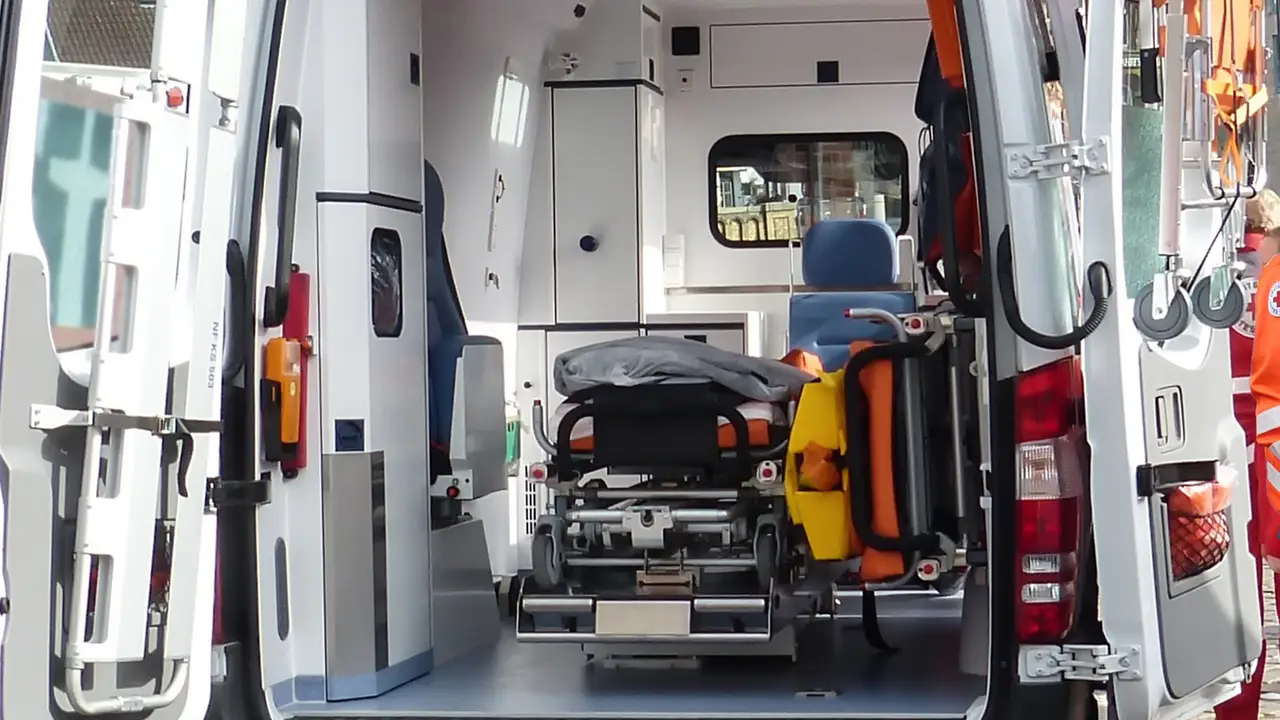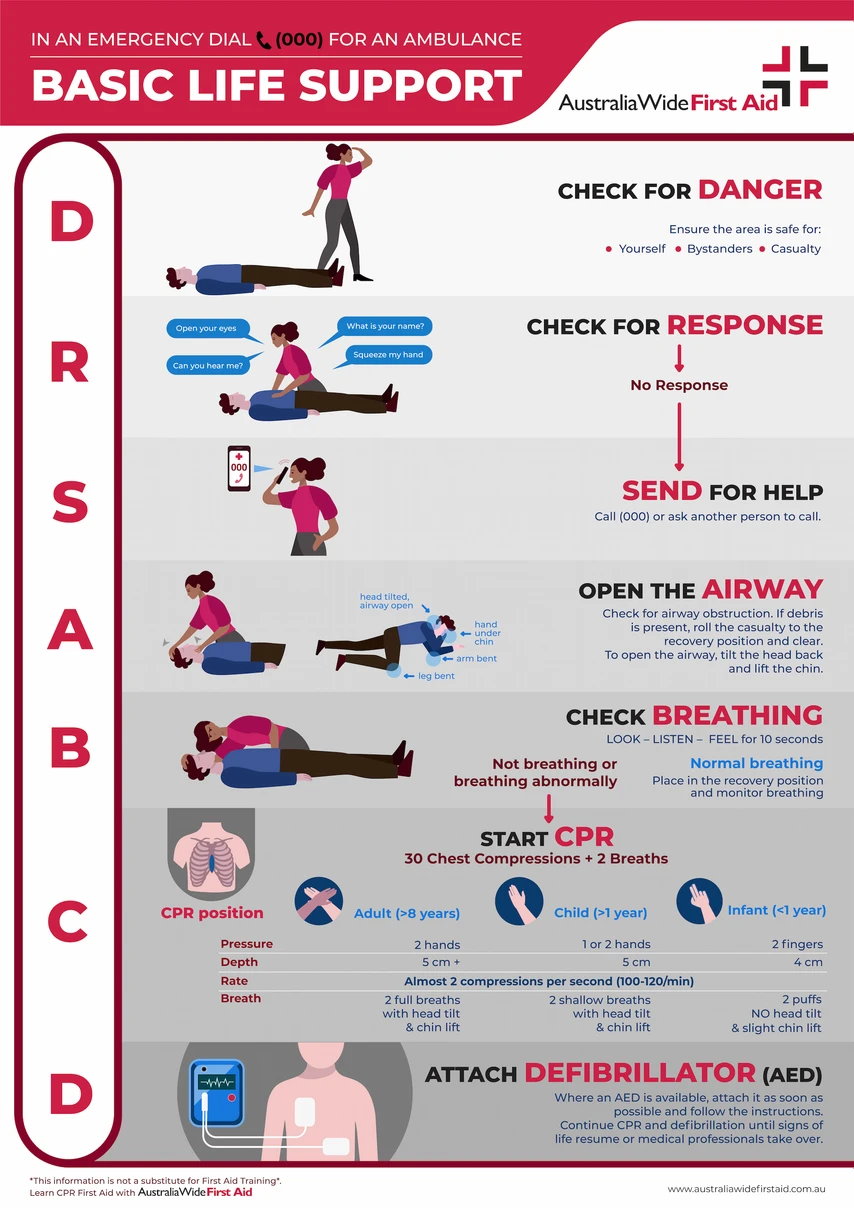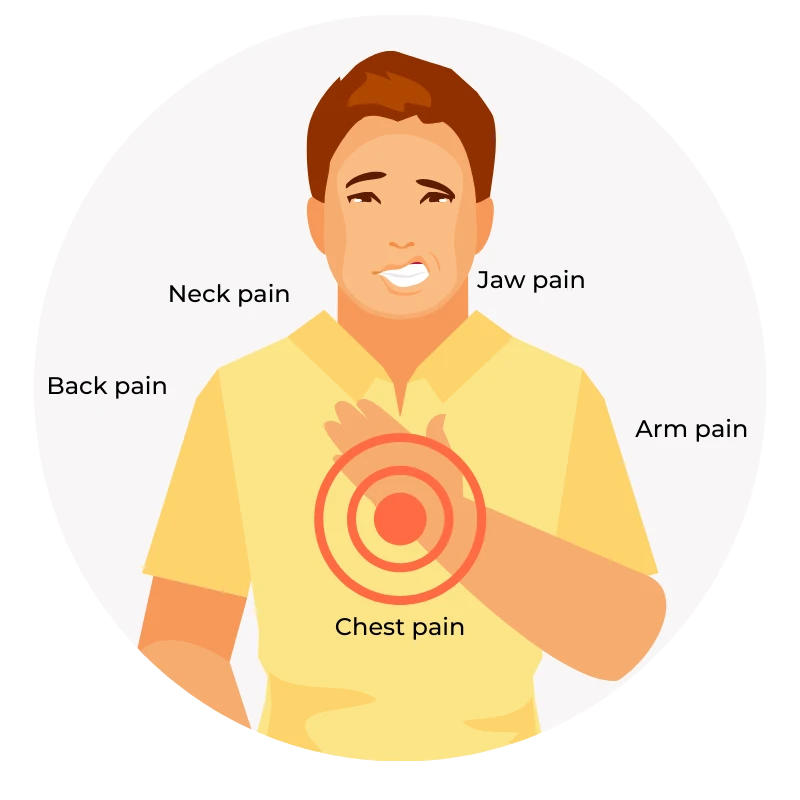Heart Attack First Aid


A heart attack is a medical emergency. The aim of administering first aid treatment for a heart attack is to prevent cardiac arrest - where the heart stops beating.
Time is of the essence and when the symptoms suggest a heart attack, it’s better to waste no time calling 000 and requesting an ambulance.
Every minute counts. Call 000, even when it’s not yet clear it’s a heart attack.

Heart attack — myocardial infarction (clinical term) — is a result of blood flow to the heart being blocked. Coronary heart disease is the most common cause.
Over time, fatty deposits can build up in arteries as plaque (atherosclerosis). A piece of this plaque can break off and cause a blockage (blood clot), in turn disrupting oxygen supply to the heart, causing a heart attack.
If the coronary artery is not unblocked quickly, the part of the heart nourished by oxygen-enriched blood via that artery normally begins to die.
The longer a heart attack goes without treatment, the greater the damage.
The heart doesn’t stop beating during a heart attack. However, a heart attack can trigger an electrical disturbance leading to Sudden Cardiac Arrest.
You can read more about heart anatomy here.

Symptoms can include sudden chest discomfort or pain (angina). The discomfort can spread to the arms, neck, jaw, or back.
Jaw pain is not unusual because the nerves that serve the jaw are close to those that serve the heart.
Other symptoms can include sweating or cold sweats, dizziness, light-headedness, or feeling anxious.
Nausea, indigestion, vomiting, shortness of breath or difficulty breathing — with or without chest discomfort — can also be experienced.
These signs can often begin slowly, worsening over days, weeks, even months, before a heart attack.
Chest pain often described as a pressure or squeezing sensation and located at the centre of the chest, is the most common sign among men. This can sometimes be felt from armpit to armpit.
Other common heart attack symptoms for men include:
In women, while the most common symptom of heart attack is chest pain or tightness, pain in the upper abdomen can also be experienced.
Women are more likely than men to experience symptoms that are atypical. These include:
These less-than-typical symptoms could explain why women suffering from heart attacks are not typically quick to seek medical attention.
Some heart attacks occur with no noticeable symptoms at all. These so-called silent heart attacks could represent as many as half of all heart attacks.
Some silent heart attacks may resolve themselves, with the offending clot dissolving or being absorbed into the body. Other silent heart attacks can cause damage.
A silent heart attack may be discovered months or years after the fact. The evidence can be seen in electrical patterns picked up by an electrocardiogram.
Heart attack can feel like uncomfortable pressure, aching, numbness, squeezing, fullness, or burning feeling in the chest.
Often, people who’ve had a heart attack mention feeling an uneasy sense of doom they can’t explain.
That said, no two heart attacks are the same, even for the same person.
The only way to know is to get urgent medical assistance. Heart attacks can be diagnosed by medical tests. You’ll either receive the treatment you need without delay or be relieved to know your problem is not so serious.
The symptoms can last for several minutes or come and go.
A heart attack is a medical emergency. Call 000 immediately, especially when symptoms are severe, worsening, or lasting more than 10 minutes.
A Critical Pathways in Cardiology study found that symptoms lasting less than 5 minutes are unlikely to indicate a heart attack. Whereas symptoms lasting longer than 5 minutes should be taken seriously as signs of myocardial infarction (the clinical term for a heart attack).
Ask for an ambulance. Treatment can start when ambulance staff arrive, saving precious minutes and preventing damage to the heart — making it the safest way to be taken to hospital.
Emergency treatment is needed to restore blood flow to the heart. The faster this happens, the less damage to the heart muscle.
Heart attack treatment may involve surgery and medications.
Surgical procedures can include coronary angioplasty, percutaneous coronary intervention or stents.
The procedures involve inserting a long tube (catheter) with a tiny balloon on the end. The entry point can be an artery in your groin, arm or wrist. Guided up into the heart’s artery, the balloon is inflated at the narrowed part of the artery. A small mesh tube (stent) is then inserted to keep the artery open after the catheter is removed.
Coronary artery bypass graft surgery takes a healthy blood vessel (or more than one) from the chest, leg or arm, and attaches (grafts) it to the side of the blocked artery. This surgery bypasses the blockage to improve blood flow to the heart.
The hospital stay after a heart attack is usually 2 to 5 days, depending on the treatment and the person’s recovery.
With prescribed medications, it’s important to stay the course, stopping only if that is the considered advice of your doctor or cardiologist.
The medications can include anticoagulant and anti-platelet medicines designed to reduce the blood’s clotting action.
Thrombolytics are injected into a vein to dissolve blood clots that may be narrowing or blocking your arteries.
Beta-blockers are often prescribed to help relax the heart muscle, slow the heartbeat and lower blood pressure.
Blood pressure medications, such as Angiotensin-converting enzyme, and nitrates, widen (‘dilate’) the blood vessels to reduce strain on the heart.
Statins are prescribed to reduce the risk of heart attack by helping to lower cholesterol.
Disclaimer: This article is for informational purposes only. It does not constitute, replace, or qualify as any form of first aid training.

May 1, 2025
Pterygium, also known as surfer's eye, is an ocular surface disease characterised by a growth of limbal and conjunctival tissue over the cornea. Fortunately, you can practice many eye health habits to help prevent the development of pterygium and other risks.

April 3, 2025
Tuberculosis is a severe bacterial infection that mainly affects the lungs and other parts of the body, including the nervous system. This contagious disease can quickly spread in crowded areas when an infected person coughs, talks, or sneezes.

February 13, 2025
Melioidosis is a bacterial infection caused by Burkholderia pseudomallei, a microorganism found in soil and water. This infection is often underdiagnosed due to symptoms mimicking many other illnesses. As such, awareness is critical for those living or working in affected regions.